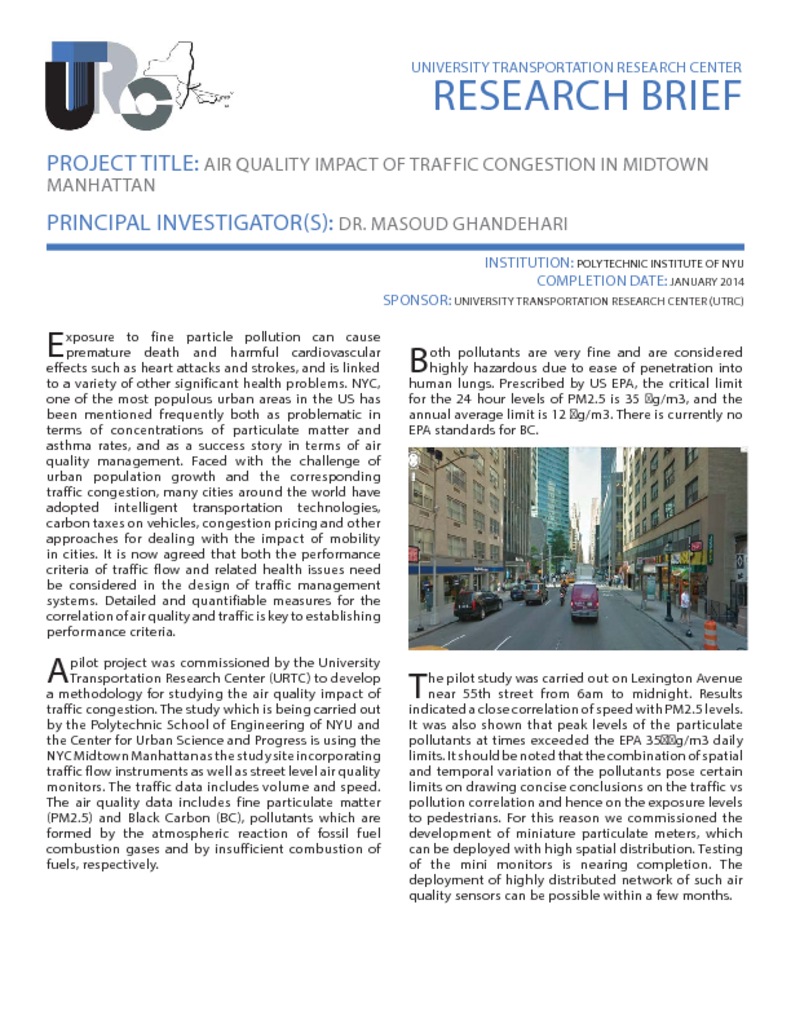Exposure to fine particle pollution can cause premature death and harmful cardiovascular effects such as heart attacks and strokes, and is linked to a variety of other significant health problems. NYC, one of the most populous urban areas in the US has been mentioned frequently both as problematic in terms of concentrations of particulate matter and asthma rates, and as a success story in terms of air quality management. Faced with the challenge of urban population growth and the corresponding traffic congestion, many cities around the world have adopted intelligent transportation technologies, carbon taxes on vehicles, congestion pricing and other approaches for dealing with the impact of mobility in cities. It is now agreed that both the performance criteria of traffic flow and related health issues need be considered in the design of traffic management systems. Detailed and quantifiable measures for the correlation of air quality and traffic is key to establishing performance criteria.
A pilot project was commissioned by the University Transportation Research Center (URTC) to develop a methodology for studying the air quality impact of traffic congestion. The study which is being carried out by the Polytechnic School of Engineering of NYU and the Center for Urban Science and Progress is using the NYC Midtown Manhattan as the study site incorporating traffic flow instruments as well as street level air quality monitors. The traffic data includes volume and speed. The air quality data includes fine particulate matter (PM2.5) and Black Carbon (BC), pollutants which are formed by the atmospheric reaction of fossil fuel combustion gases and by insufficient combustion of fuels, respectively.




